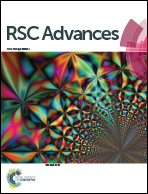Hydrolyzed tilapia fish collagen modulates the biological behavior of macrophages under inflammatory conditions
Abstract
Implantation of a biomaterial causes an early and local inflammatory reaction, and regulation of the biological behavior of macrophages under inflammatory conditions caused by biomaterials is imperative for the full realization of their function after being implanted. In recent years, hydrolyzed fish collagen has attracted extensive attention resulting from its biological activity. However, to date, no studies have investigated the anti-inflammatory activity of hydrolyzed fish collagen. The aim of this study is to evaluate the effect of hydrolyzed tilapia fish collagen (HFC) on lipopolysaccharide-induced inflammatory responses in RAW264.7 macrophages at the gene and protein level and to elucidate its potential mechanism. The results show that glycine rich in HFC can activate the glycine receptor (GlyR) of macrophages, leading to decreased calcium concentration in macrophages, this decrease inhibits the activation of NF-κB, and then the inhibition of NF-κB further attenuates the inflammatory cytokine gene expression and protein secretion. The current study reveals for the first time that by regulating the biological behavior of the macrophages under an inflammatory state, HFC exhibits specific anti-inflammatory effects. More importantly, the presence of GlyR in RAW264.7 cells is verified for the first time. These findings provide a scientific basis for the future application of HFC in anti-inflammatory biomaterials.


 Please wait while we load your content...
Please wait while we load your content...